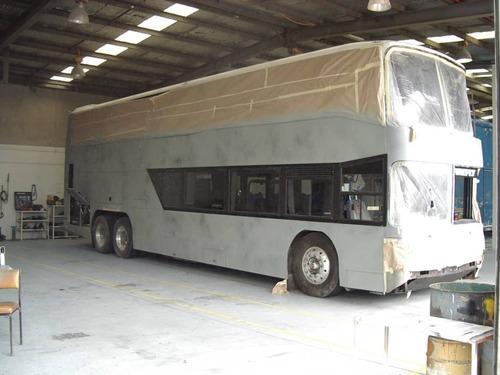DIN 6701 and DIN 2304: What are they and what do I need to know?

If you’ve heard of both DIN 6701 and DIN 2304 and you’re not sure what they are all about, this article is for you.
Here at Forgeway, we have worked in the adhesive and sealant industry for over 25 years. We help our customers understand what they can and can’t do with glue.
When it comes to the correct joint design and adhesive application process, it can be difficult to know where to look for guidance. That’s where the DIN standards come into play. They provide guidance for the adhesive application process.
This article will summarise the background to these standards. We will then discuss why you might want to consider becoming certified. Finally, we will go through the process of becoming DIN 6701/2304 certified.
By the end of this article, you will have a greater understanding of the DIN standards and whether they apply to you.
What are DIN 6701 and DIN 2304?
DIN 6701 and DIN 2304 are both German standards to help reduce adhesive bonding faults in their respective industries. Din 6701 was introduced by the Eisenbahn-Bundesamt (Federal Railway Authority of Germany) in May 2006. It was created specifically for adhesive bonding processes in the rail manufacturing industry.

DIN 6701 comprises four parts:
- DIN 6701-1: Basic terms and basic regulations (which has since been withdrawn)
- DIN 6701-2: Qualifications of the ‘user-companies’ (the companies which use the adhesives)
- DIN 6701-3: Design specifications – guidance for construction design and verification of bonds
- DIN 6701-4: Regulations for manufacturing controls and quality assurance
Following the success of DIN 6701, several variations of the standard have followed.
DIN 2304 was the first to follow after DIN 6701’s popularity. The German Institute for Standardization introduced DIN 2304 in 2015. But DIN 2304 applies to all load-bearing bonded joints in other sectors and industries (such as automotive, construction, aerospace etc) in Germany, rather than just the rail industry.
EN 17460 and BS EN 17460 have since followed. It is the same standard as DIN 6701 but applies to the rail industry in Europe and Britain respectively. EN 17460 and BS EN 17460 have only recently been introduced (2022). EN 17460 will replace DIN 6701 within the next three years.
Nonetheless, all of these variations have the same common goal; creating a system that maximises efficiency, but reduces risk. Whilst the wording of these standards may be slightly different, all variations have the same format. We will go over this format later in the article.
Who needs DIN 6701 and DIN 2304?
Because DIN is the German set of standards, they apply in Germany. DIN 6701 is a mandatory requirement if you are producing or repairing classified bonded joints for rail vehicles which are operated on EBA-controlled tracks.

Outside of Germany, these are just standards. You aren’t legally required to become accredited to these standards.
But who would typically become accredited?
For DIN 6701, user companies (as per 6701-2) would be any company in Germany that undertakes the following for rail vehicles:
- Manufacturing
- Repairing
- Designing
- Distributing
- Distributing bonded parts and components
- Contractors who carry out adhesive bondings
DIN 2304 is much the same. It is relevant for anyone who supplies the above services to the ‘user companies’ of DIN 2304 (such as automotive, commercial vehicle or construction industries) in Germany.

EN 17460 is the European standard’s equivalent of DIN 6701. It will eventually replace DIN 6701 within the next three years. The British Standards Institute (BSI) has recently (Aug 2022) introduced BS EN 17460. These are both standards for adhesive bonding of rail vehicles and their parts.
Why become DIN 6701 and DIN 2304 certified?
You don’t need to become certified to any of the above-mentioned standards (unless you are producing or repairing classified bonded joints for rail vehicles which are operated on EBA-controlled tracks.) So why should you become certified?
There are several reasons why you should consider becoming accredited to these standards.
You will create a repeatable bonding process
Some companies are having great difficulty creating a repeatable bonding process. Whilst there are several ways you can create a repeatable process, implementing a standard is the most fail-safe way in our opinion.
Standards help create a ‘standardized’ process. You will always face resistance from some stakeholders. But once you have implemented a standard, it will become the central point that you can refer back to whenever you aren’t sure how to create a repeatable bonding process.
A repeatable bonding process is important for three reasons:
- It allows you to scale-up production easier.
- It reduces quality issues.
- It improves levels of consistency
These bonding standards provide a framework for how you can create a repeatable and simple bonding process.

You will have legal back-up
In the event of bond failure, your company will have legal backup if you are accredited to one of the standards. When things go wrong, courts will often assess whether companies took ‘all means necessary’ to mitigate the risk.
Being accredited to these standards will provide courts with proof you took those steps. The standards outline ‘user companies’. If these companies don’t comply with the standards, they will inevitably face questions about why they didn’t use these standards to prevent bonding failure.
You will gain a competitive advantage
Not every company is compliant with these standards. However, becoming accredited is very similar to becoming ISO 9001 accredited. It gives your customers the peace of mind that you have a quality management system in place.
It is also very common for companies to specify that their suppliers must be accredited. Even if your customers don’t specify that you need to be accredited, you can use it to your competitive advantage.

How do you become DIN 6701 and DIN 2304 compliant?
You can achieve compliance with DIN 6701 and DIN 2304 in two ways.
- First party audit (e.g. Manufacturer’s self-declaration)
- Independent certification, carried out by an independent accredited certification body
We are using DIN 6701’s terminology as an example in this section. The other variations of this standard follow the same format but will have different terminology.
But what do you need to do to become certified? An audit from a certification body will determine whether you are compliant with the standard. There are five steps to creating an accredited process.

Step 1: Classifying the bonded joint
The bond classification is the first step in implementing DIN 6701. It ensures you have evaluated how much threat-to-life a bond will pose.
To do this, you can designate the bond into one of four categories.
- A1 – Bonds with high safety requirements. Failure of the bond will result in a threat to life or physical condition or will jeopardise the reliability of service.
- A2 – Bonds with average safety requirements. Failure of the bond may result in accidents that involve physical injury to persons. Or it may result in impairment of serviceability of the complete system.
- A3 – Bonds with low safety requirements. Failure of the bond results in loss of comfort at most. Accidents involving physical injury are unlikely.
- Z – Bonds with no safety requirements. Failure of the bond will not cause any threat to life or physical condition. It will not jeopardise the reliability of the service.
Step 2: Determine the scope of work
When it comes to the auditing process, you need to establish a few things first. Sometimes, you will only need to certify one project in your company. There may be other projects within your company that don’t need to comply with the adhesive bonding standards.
An example could be if you were a plastic component manufacturer. You supply composite panels to a rail manufacturer. The customer has specified that you must be DIN 6701 accredited to supply them. You can limit the certification to that project.

This means that if you supply other products to other industries that don’t require these standards, you won’t need to audit that process.
So whatever part of your company you need to audit, you must establish a few things about that part of the project.
- Approximate volume of adhesive bonding (classification and amount of bonds).
- Amount of bonding work areas that require auditing
- Who is responsible for design and process engineering
Step 3: Designate the bonding personnel
The process of appointing the bonding personnel is different for every company. All of the people you appoint must have the right qualifications for that job role. Qualification level depends on the class and scope (such as A1 etc) of the bonding processes in the company. They must be able to prove their competency to have that role within the process.
You must also appoint deputies for instances where personnel are absent. You can see the chart for the required levels of qualification below.

Step 4: Implement the system within the company
Now that you have done all the preparation work, it’s now time to put it into practice. You will need to ensure all the relevant personnel have the correct levels of qualification. They need to know what their role is and why it’s important.
At this stage, it is very important to bear in mind the following.
- Establishing how everything works (e.g. classifying bonds, process descriptions).
- Are the staff documenting the processes (e.g. bonding protocols, quality sheets)?
- Is the process working? Are there any parts you could improve?
Step 5: Get audited
Now that you have implemented the processes, it is time for the audit. The audit will study 8 key areas.
- Organisation of the company (integration of bonding personnel into existing structure)
- Qualification of staff
- Contract review
- Supplier management
- Design/adhesive choice
- Production & documents
- Logistics and storage
- Quality assurance and testing
The auditing process will usually take between one and two days.

The next steps to becoming DIN 6701/2304 accredited
Now you have a good overall idea of the DIN 6701/2304 process. Your next step is to look into implementing the standard into your organization. Whatever your reason for looking into DIN 6701 accreditation, you are probably wondering what the next steps are.
Here at Forgeway, we manufacture a range of adhesives. We do not provide the training or the auditing process in DIN 6701. Nonetheless, we can offer support on the first two steps in the implementation process.
We are adhesive experts. We have extensive knowledge of all things adhesives. But if you are struggling to know how to introduce one of the adhesive bonding standards we already mentioned, we aren’t able to help. TBBCert would be the best company to speak to.
We are working with TBBCert to provide a free webinar on September 29th 2022 all about the entire DIN 6701/2304 process. TBBCert is going to dive deep into detail about how the standards work. You will understand how they work and how you can implement them in your bonding process.
You can find out more information about the webinar by clicking here.
Thomas is the Content Manager here at Forgeway. Thomas' job is to translate the technical jargon from the ivory tower of academia into easy-to-read content that everyone can understand. Forgeway's mission is to answer every question our customers and prospective clients ask, or are apprehensive to ask.
Topics:


